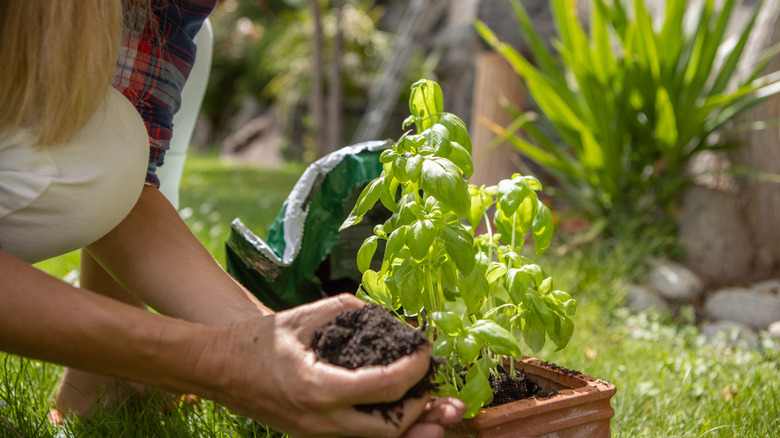Basil is one of the best herbs for your indoor garden as it is easy to grow and yields tasty leaves. You can find the secret to ensuring this plant thrives right in your kitchen. A scrap you likely throw away every day would serve you better by mingling with your basil’s soil. After your morning cup or two of coffee, save the grounds. Coffee dregs are an organic and inexpensive source of nutrients that basil loves. They contain nitrogen, phosphorous, and potassium — the same elements in standard fertilizers.
Coffee grounds also ward off pests and fungal diseases while attracting helpful wildlife like earthworms. Whether caffeinated or decaf, your basil is not picky, but avoid feeding it flavored coffee. These varieties often have additives that do more harm than good. You also want to wait for your plant to grow out of its seedling years before you spike its soil. Coffee grounds can stunt germination and the growth of young plants, but for the adult basil, bottoms up.
How to use coffee grounds for growing basil

You can turn used coffee grounds into liquid fertilizer so your basil plant drinks its nutrients. You’ll need 2 cups of coffee grounds and 5 gallons of non-chlorinated water, like rainwater, to make the solution. You can use tap water, but first, let it sit for 24 hours before adding the crushed beans. Then, let the coffee steep for around eight hours before transferring the brew into spray bottles. Spritz your basil’s leaves and stems to deliver the boost of nitrogen. If you have a large crop of herbs, alternatively, you can add the liquid fertilizer to your drip irrigation system so the drops of coffee reach their roots.
Another way to give your basil its morning cup of joe is to mix the grounds with its soil. Add a ½ cup of damp coffee grounds to the topsoil of each plant. You can combine the caffeinated compost with your fingers or use a fork as a mini rake. Fertilizing the herb with coffee once a week to every three weeks is sufficient to boost your plant’s health without overwhelming the basil. It’s an all-natural and cheap hack that could also help bring your dying basil plants back to life.